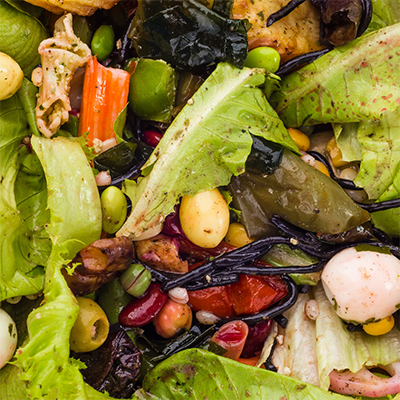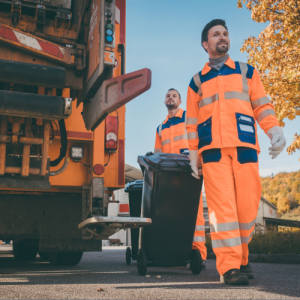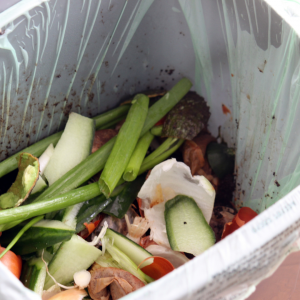Lets work together



Suite 3A, Chapel Allerton House, 114 Harrogate Road, Leeds, LS7 4NY
ukinfo@integrated-skills.com
+44 (0) 3300 888 670

As the Government’s Simpler Recycling deadlines edge closer, we’re turning our thoughts to food waste. The reforms include a requirement for Local Authorities to provide regular food waste collection services, starting with businesses in March 2025. Households across the country can expect a weekly food waste collection from March 2026.
The Anaerobic Digestion sector will no doubt be pleased at the news, but how will this huge uplift in processing power be achieved? And how will Local Authorities guarantee the weekly collections promised by central Government?
Here we’ll be explaining why the reforms are great news for the environment. We’ll also be discussing the barriers to the successful implementation of the great food waste plan- from funding and infrastructure, to the delicate issue of plant locations…
The term “food waste” will likely bring simple table scraps to mind. But the issue runs deeper than you may think. For every wasted slice of bread and discarded vegetable, all the resources used to create that food are wasted too. Think about the energy, fuel and water that will have gone into their production from farm to table.
Once the food has been discarded and those resources have been wasted, the materials then decompose. This releases methane, a greenhouse gas 25 times more potent than carbon dioxide.
“When we throw away food, we also throw away the precious resources that went into producing this food. This includes the use of land and natural resources, the social cost to the environment, and our biodiversity. Food waste accounts for one-third of all human-caused greenhouse gas emissions and generates 8% of greenhouse gases annually. With these statistics in place, there is a huge need to reduce this environmental footprint.” Earth.org
Food waste results from discarded, out of date produce from supermarkets, table scraps from homes and restaurants, and bi-products of food preparation such as peelings and trimmings. The Government has committed to reducing food waste by 50% by 2030 (against a 2015 baseline) in line with the UN’s sustainable development goals.

Anaerobic Digestion is the process through which food waste can be broken down into useful components, without adding greenhouse gases to our atmosphere and without the use of oxygen.
It’s a biological process whereby food waste is “digested” by mico-organisms in airtight, dark containers to produce bio-gas and organic fertiliser.
The process:
Effectively, four products are produced from anaerobic digestion:
This process is very cost-effective when compared to landfill or incineration fees. Food waste weighs far more than other forms of waste, making it very expensive to process in traditional ways. If it’s not separated out from other waste, it adds significant weight, causing local councils to pay a premium at landfill and incineration sites.
As a simple, cost-effective and environmentally friendly option, anaerobic digestion is the Government’s preferred process.

The required food waste services will create an entirely new waste stream for many Local Authorities. This will mean changes throughout the waste management plan; from household starter kits to public engagement, new vehicles and upgraded depots.
Anaerobic digestion operators are poised and ready to handle the uplift in food waste heading their way, but what do Local Authorities need to consider when working out how they will handle this new waste stream?
With little information forthcoming re how this will be funded and what Anaerobic digestion operators will charge, Local Authorities are currently planning in the dark.
Much of the country is well-covered, but some regions do not have enough plants to handle the expected increases in demand. This may mean additional planning and costs due to the need for storing and bulking food waste in sealed skips for transportation to processing plants.
When it comes to building new plants or converting existing sites for this new purpose, the public may pose an issue. While the digestion chambers are sealed, plants still pose an issue around odour.
This issue is already in the news with a proposal halted for a site in Newhaven due to resident concerns about noise, smell and vermin.
Many factors must be considered when arranging contracts with anaerobic digestion operators.
Location is top of the list- they must have sites in your area that are well-positioned to avoid complaints. They must also be well-designed and maintained.
Health and safety must be a clear priority for operators due to the risks of fires, explosions and pollution caused by the natural gases involved. They must also be able to demonstrate how they avoid contaminants entering the system (such as grit and plastic) which can cause downtime for cleaning.
Great questions to ask include:
While there are so many unknowns for Local Authorities, we can help arm you with relevant information. Through our network of local authority waste management experts, we can ensure your questions are answered and put you in touch with those in the know.
Through our own effective waste composition analysis services, you can determine how much food is currently in the residual stream and prepare yourself and any future contractors for the amount of food waste expected.
Understanding the expected level of food waste to be collected is vital for your fleet. Effective planning for additional vehicles, vehicles with food pods or outsourced services can be achieved with our route optimisation and route planning software called “RouteSmart”.
Speak to us today for expert support during this challenging time.
Would you like to know more about Will They Avoid Making a Stink?? Fill in your details below and let us know how we can help.
Website Designed & Built by we are CODA